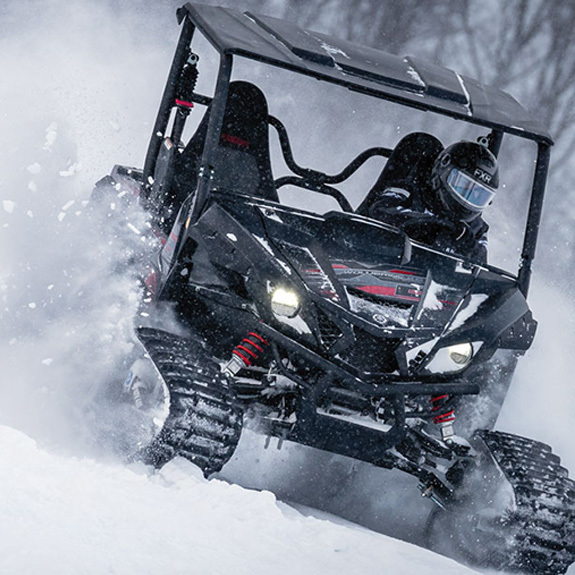Pro tips to optimize construction tire performance in winter conditions
For clients who are dealing with multiple seasons, winter conditions can represent a big portion of their operations. While most of us think this only means working on snow, did you know that operating construction machinery in weather below 7 °C (44°F) is considered as working in winter conditions? And since your tires are the only point of contact of your vehicle with the ground in all given conditions, from icy to snowy or wet, a few guidelines apply in order to ensure maximum uptime and performance.
Even more than they do in milder conditions, tires require regular care and maintenance during winter months. With these simple measures, equipment operators can help reduce tire wear and improve the lifespan of their tires. Let’s take a look at the 4 main tips our experts recommend.
1. Inspect your tires
Make sure to inspect your tires to ensure they have adequate tread depth going into the snowy winter season. If your tires don’t have sufficient tread depth, your tires won’t perform as needed even if air pressure has been adjusted for winter. As you carry out your tire inspection, also look for uneven wear, cracking and chunking, and remove debris from lugs. Tires that wear unevenly can represent safety hazards as they can impact your equipment’s alignment, steering and traction. We recommend daily inspections as part of your routine.
2. Adjust tire pressure
Colder weather has a direct impact on tires. Indeed, when temperatures drop, so does the pressure of pneumatics: the lower the temperature gets, the lower the pressure in the tires is. This is why we advise reading your manufacturer’s user guide and adjust tire pressure for machines working outside in such conditions. A machine equipped with tires that have an inflation pressure below the manufacturer’s recommendation can be problematic and could lead to tire failure. We therefore recommend a daily check-up of air pressure at the beginning of the workday or shift.
3. Adapt driver behavior
While operator behavior has impacts on multiple elements like tire wear, it also has an impact when working in winter conditions. Drivers need to adapt elements like speed, and sharp turns in order to ensure safe operations, as the machine might slip or get stuck. Operators also need to pay particular attention to surface conditions, which will have a significant impact on how tires perform: in addition to the weight of carried loads and how machines are used (travel distance, speed, weather, etc.), surface conditions will have an impact on traction. Applying these recommendations can be the difference between downtime and productivity.
4. Increase warm-up time
Just as you need to do with your equipment’s engine, your tires will require more warm-up time in cold conditions than in milder temperatures in order to offer optimal performance. Make sure to take the time to properly warm up your tires accordingly.
One last general safety tip before you go
In addition to the harsh weather conditions that can take a toll on your construction equipment, winter months are also a time when there is much less daylight time on work sites. Working in the dark also brings its load of challenges, as it can be harder to carry out proper inspections of your equipment and the tires without good lighting, in addition to higher rates of operator fatigue. Make sure to also take these elements into consideration to allow your teams to work in safe, productive conditions. If you’d like to dig a little deeper to learn more about tire technologies and tips to extend life, here’s a great article our experts put together. To learn more about our complete range of construction tire solutions for all seasons and applications, visit the construction section of our website.



























